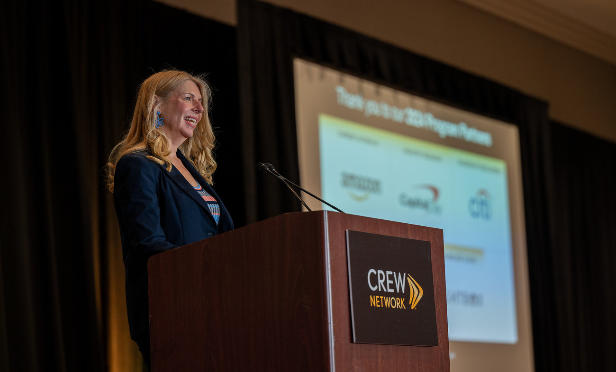 Source: JLL Mid-Atlantic Research
Source: JLL Mid-Atlantic Research
BETHESDA, MD—The list of transportation projects geared at relieving its transportation woes has increased and so has the cost of these major infrastructure projects. However, a report by brokerage firm JLL contends these projects are vital to improving the connectivity of the region.
JLL reports that estimated development costs for the 10 largest transportation infrastructure projects now exceeds $35 billion. The report authored by Patrick Latimer, senior research manager, Maryland of JLL Mid-Atlantic Research, notes that the largest of those 10 projects already under construction is the Purple Line in suburban Maryland. Expected to open in 2022, the 16.2-mile light rail line connects the rapidly expanding Bethesda CBD directly with Silver Spring and Prince George's County, and has already spurred multifamily development and proposals, including EYA's 11-story Lindley building in Chevy Chase, which will deliver 200 units next month.
The proposed projects are a mix of road, rail and public transportation improvements, all of which will be vital to enhancing regional interconnectivity and easing congestion, Latimer says.
The largest proposed road project in Maryland is the addition of express lanes to I-495, I-270 and the Baltimore-Washington Parkway. At an estimated $9 billion, the proposed public-private partnership would add 100 miles of express lanes, making it the largest highway PPP project in North America.
In a race to compete with Northern Virginia, the project addresses the state's most congested stretches of highway in suburban Maryland, and would enhance connectivity between Baltimore and Washington, DC via the Baltimore-Washington Parkway.
Another critical road proposal, estimated at $1.1 billion, would extend toll lanes along I-95, extending existing express service by 10 miles from White Marsh to Abingdon.
Roadway-related improvements also include proposals for bus rapid transit in Montgomery County, totaling $2.2 billion in development costs when including the Corridor Cities Transit BRT in Gaithersburg and Clarksburg. The primary routes along MD 355, US 29 and Veirs Mill Road would cover nearly 39 miles. The first phase of the BRT network is taking shape along US 29 in eastern Montgomery County, with construction potentially beginning in early 2019, Latimer states.
The report also covered rail transportation in the region and the proposed Maglev project tops the proposed rail infrastructure project list in Maryland, with the greatest potential and cost to increase connectivity in the region. At an estimated $12 billion and utilizing new technology, the project would establish a new 40-mile right-of-way between Baltimore and Washington, DC, with travel times between the two cities cut from 40 minutes to 15 minutes.
Baltimore Washington Rapid Rail, the company behind the proposed project, has selected two potential alignment scenarios along the Baltimore-Washington Parkway, with stations in Washington, DC, BWI Airport, and Downtown Baltimore.
Maryland's proposed rail projects also address the state's existing aging infrastructure, primarily along Amtrak's Northeast Corridor. Last year, the Federal Railroad Administration selected a new route to replace the Baltimore & Potomac Tunnel in West Baltimore, which will cost an estimated $4.5 billion. The current tunnel is 145 years old, and a major chokepoint for Amtrak's Northeast Corridor and the 140 passenger trains that utilize the tunnel daily, the report notes.
Also, along Amtrak's Northeast Corridor in Maryland, plans are progressing to replace the 111-year-old bridge over the Susquehanna River, with a projected cost of $1.1 billion. Both rail projects will increase capacity and reliability for Amtrak's Northeast Corridor service, along with Maryland Area Regional Commuter passenger and Norfolk Southern Rail freight operations.
Other rail infrastructure projects include proposed renovations for the Howard Street Tunnel, which is owned by CSX, in Downtown Baltimore, which are projected to cost $455 million. The tunnel renovations would link the Port of Baltimore to CSX's double-stack network, allowing shipping containers traveling via the Port to be stacked two-high. The investment to link the Port of Baltimore to CSX's double-stack network would further bolster the region's competitiveness for distribution and warehouse users, Latimer states.
“The cost and scope of proposed infrastructure projects in Maryland is daunting, but there are lower cost opportunities as well to enhance connectivity in the region, including portions of MARC's capital improvement plan for commuter rail service,” Latimer notes in the report.
He cites MARC's long-term potential capital improvement plan for the Penn Line that calls for doubling the frequency off-peak trains that would come at a cost of nearly $100 million.
“The realization of these projects will take years to arrive, but the impact from Maryland's major infrastructure projects is already occurring, beginning with the Purple Line in suburban Maryland and multifamily development already underway,” Latimer states in the report. “While all of the projects will compete for both funding and approvals, they demonstrate Maryland's vision and its potential ability to transform and shape commercial real estate development, from residential to office to industrial.”
Want to continue reading?
Become a Free ALM Digital Reader.
Once you are an ALM Digital Member, you’ll receive:
- Breaking commercial real estate news and analysis, on-site and via our newsletters and custom alerts
- Educational webcasts, white papers, and ebooks from industry thought leaders
- Critical coverage of the property casualty insurance and financial advisory markets on our other ALM sites, PropertyCasualty360 and ThinkAdvisor
Already have an account? Sign In Now
*May exclude premium content© 2024 ALM Global, LLC, All Rights Reserved. Request academic re-use from www.copyright.com. All other uses, submit a request to [email protected]. For more information visit Asset & Logo Licensing.








